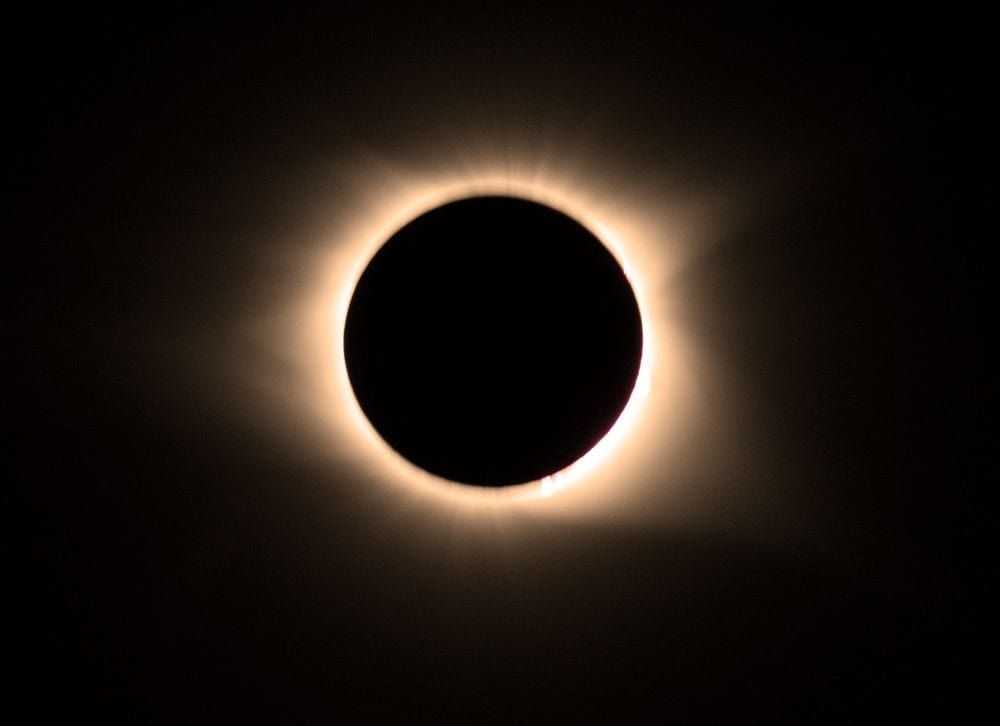Emergency and Trauma Care
Want to learn more about this at Kettering Health?
At a Glance
Q: How can I safely watch the solar eclipse?
A: Use ISO-approved eclipse glasses and plan ahead for traffic, weather, and communication challenges.
- Eclipse glasses must meet ISO 12312-2 standards.
- Never use regular sunglasses or look through optics.
- Prepare for heavy traffic and possible cell service issues.
We’re just days away from one of the biggest events of the next few centuries. On Monday, April 8, between approximately 3:09 p.m. and 3:12 p.m., Greater Dayton will experience a phenomenon that happens in a specific location only once every 300 to 400 years: A total solar eclipse.
Because Dayton is one of the cities in the path of full totality, the city’s population could triple, even quadruple, from visitors looking to witness the unique event, according to the Ohio Emergency Management Agency (EMA).
The solar eclipse itself warrants taking steps to stay safe. Add three to four times the number of people in our area, and that makes planning ahead all the more important.
Chuck Shoemaker, director of Police and Security and Emergency Management at Kettering Health, emphasizes guidance from leading agencies like Ohio EMA to help ensure everyone can safely enjoy this once-in-a-lifetime celestial event.
Advance planning
Weather: Early April can bring many possible weather conditions, including severe storms. Be aware that the weather can change quickly, and ensure you’re prepared for any situation.
- Monitor the weather forecast. Download the FEMA app to receive weather alerts for the area(s) you’ll visit.
- Pack an emergency kit in your vehicle. Consider including items like jumper cables, a flashlight, batteries, blankets, phone chargers, snacks, and water.
Fuel: The increased number of travelers leading up to and on the day of the eclipse could cause temporary fuel shortages.
- Fill up your gas tank two to three days before the eclipse, whether you’re planning to travel to watch the event or not.
Communications: With an influx of people in one area using their cell phones, prepare for disruptions to service.
- Bring or have a paper map.
- Create a communication plan with your family in advance, in case you’re separated and can’t call them.
Day-of
Eye protection: It’s harmful to look directly at the sun during a solar eclipse without proper safety equipment.
- You need to wear specific eclipse glasses or handheld solar viewers with special lenses to safely view the eclipse. Confirm your eyewear is marked with ISO 12312-2 (also written as ISO 12312-2:2015), which means it’s approved by the American Astronomical Society.
- Do not wear regular sunglasses.
- Do not look at the eclipse through binoculars, a telescope, or a camera lens, including your cell phone, without a special-purpose solar filter secured over the front of the optics.
Travel: With so many more drivers on the road, traffic on highways and local roads is likely to be worse.
- Plan your route, determining where you’ll safely park to view the eclipse.
- Do not pull off to the side of a road to view the eclipse.
- Do not try to view the eclipse while driving.
- Be prepared for traffic before and most notably after the eclipse. Main highways will be especially congested. Be patient and courteous to keep yourself and other drivers safe.
- If you need to be somewhere that afternoon, give yourself plenty of time for travel.
An exciting event to take seriously
In the days leading up to the eclipse, expect more and more visitors. Plan to get your groceries and run any errands you can a few days before the event.
The eclipse will certainly be an exciting event. But it’s also one to take seriously.
Dr. Cassandra Booher, an emergency management specialist who works with Chuck, emphasizes that
“It is important to follow the guidelines to help limit the risk of eye and property damage. If you plan to view the eclipse, please take a few extra minutes of preparation to ensure that you and your family can safely experience this once-in-a-lifetime event.”










